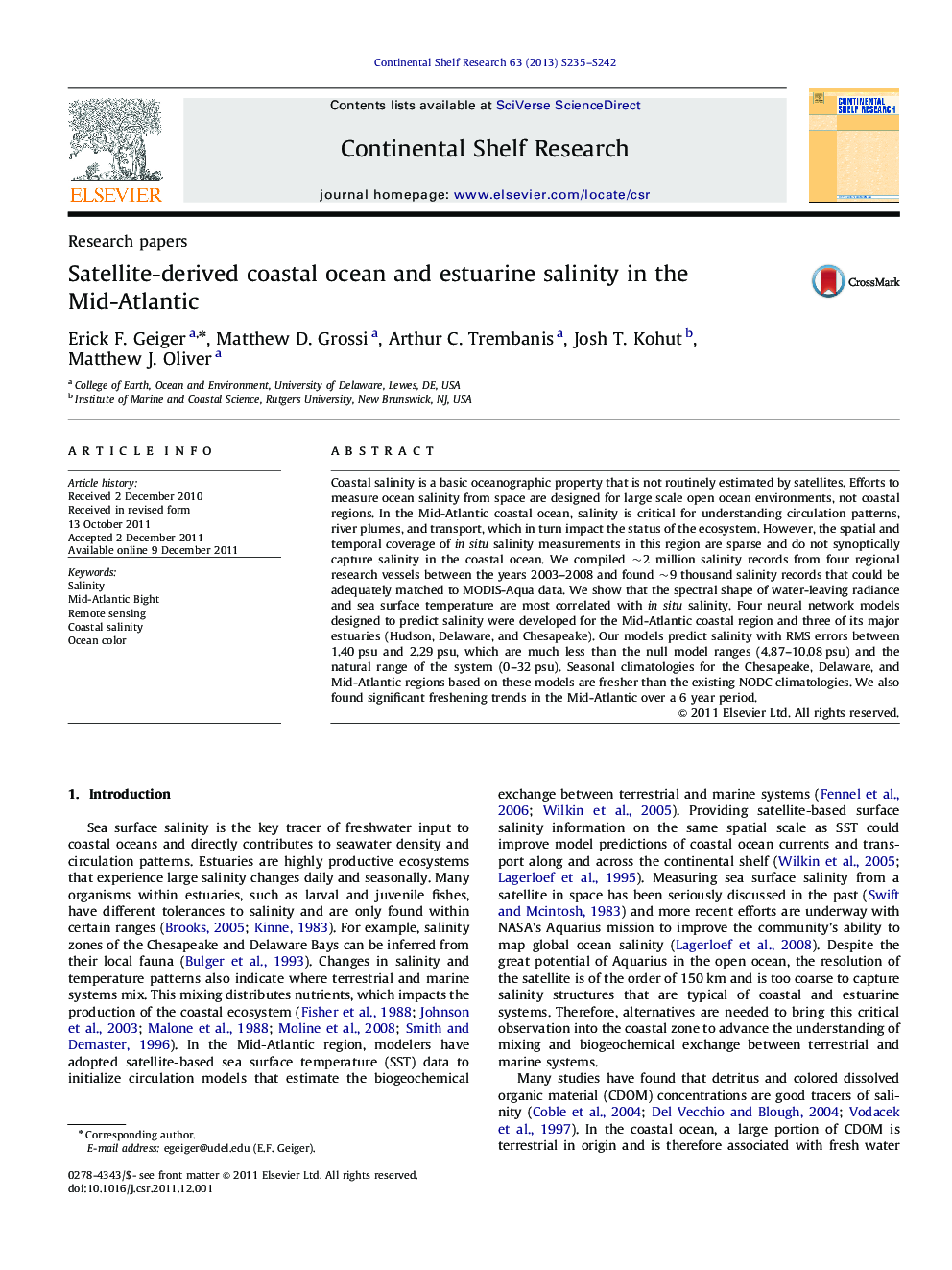| کد مقاله | کد نشریه | سال انتشار | مقاله انگلیسی | نسخه تمام متن |
|---|---|---|---|---|
| 4532094 | 1325093 | 2013 | 8 صفحه PDF | دانلود رایگان |

Coastal salinity is a basic oceanographic property that is not routinely estimated by satellites. Efforts to measure ocean salinity from space are designed for large scale open ocean environments, not coastal regions. In the Mid-Atlantic coastal ocean, salinity is critical for understanding circulation patterns, river plumes, and transport, which in turn impact the status of the ecosystem. However, the spatial and temporal coverage of in situ salinity measurements in this region are sparse and do not synoptically capture salinity in the coastal ocean. We compiled ∼2 million salinity records from four regional research vessels between the years 2003–2008 and found ∼9 thousand salinity records that could be adequately matched to MODIS-Aqua data. We show that the spectral shape of water-leaving radiance and sea surface temperature are most correlated with in situ salinity. Four neural network models designed to predict salinity were developed for the Mid-Atlantic coastal region and three of its major estuaries (Hudson, Delaware, and Chesapeake). Our models predict salinity with RMS errors between 1.40 psu and 2.29 psu, which are much less than the null model ranges (4.87–10.08 psu) and the natural range of the system (0–32 psu). Seasonal climatologies for the Chesapeake, Delaware, and Mid-Atlantic regions based on these models are fresher than the existing NODC climatologies. We also found significant freshening trends in the Mid-Atlantic over a 6 year period.
► Remotely sensed ocean color is predictive of salinity in the coastal Mid-Atlantic.
► We use neural networks to predict salinity at 1 km resolution from MODIS-Aqua data.
► Our ocean color based salinity models are fresher than NODC climatologies.
► Salinity is most variable within and around estuaries and highest overall in winter.
► Salinity trends reveal large areas of freshening in the winter, spring, and summer.
Journal: Continental Shelf Research - Volume 63, Supplement, 15 July 2013, Pages S235–S242